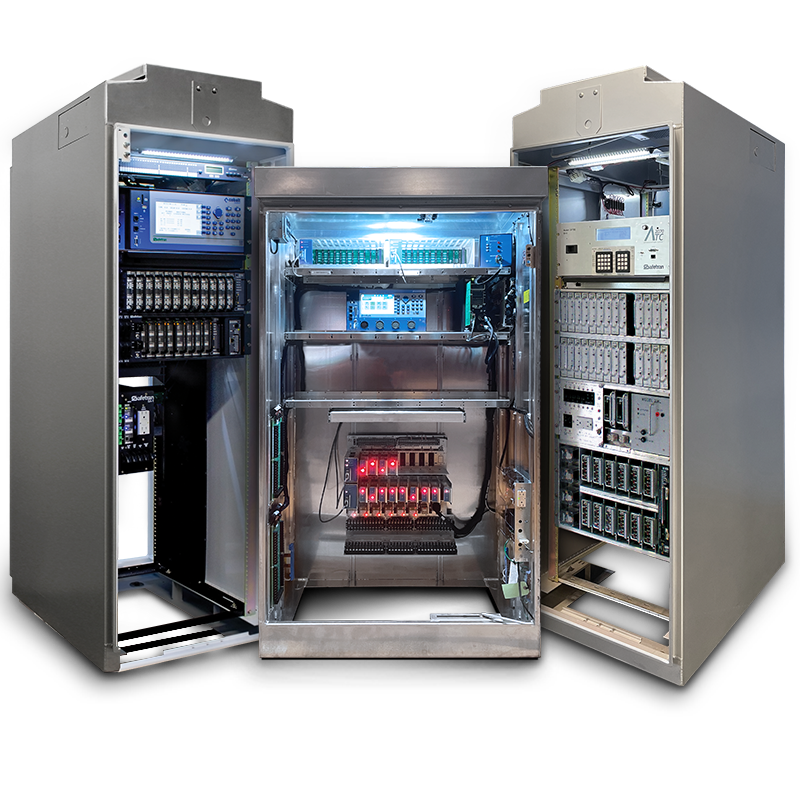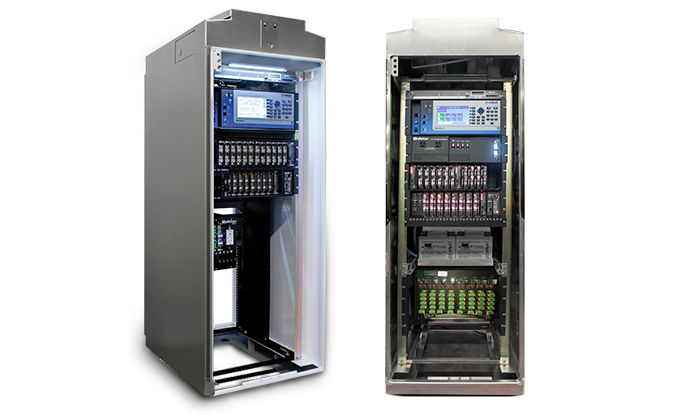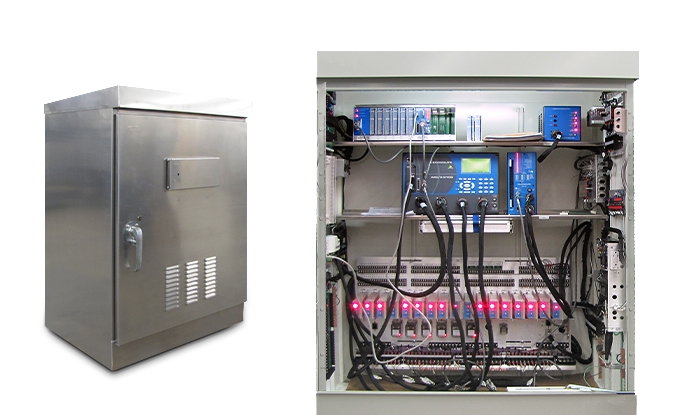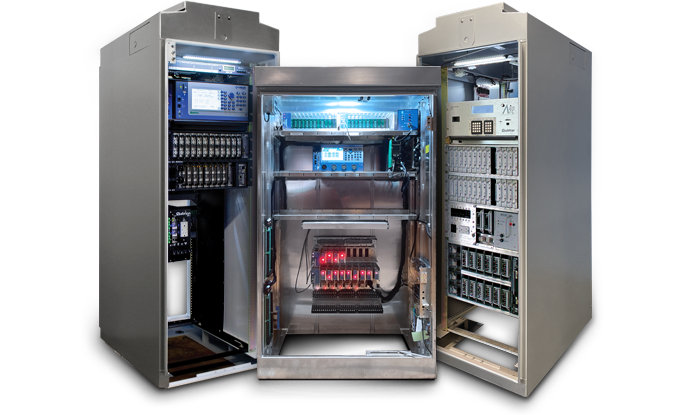Traffic Control Cabinets for Smart Intersections & Sustainable Infrastructure
In the dynamic landscape of mobility and Dynamic Multimodal Network Management, traffic control cabinets are no longer just boxes that house a traffic controller. They are the nerve centers and brains of smart intersections. Traffic control cabinets are the backbone of sustainable infrastructure. They power smart intersections. They also support sustainable infrastructure and enable real-time traffic management. Traffic control cabinets are vital to Smart City infrastructure.
As more Smart City traffic infrastructure is deployed, the role of traffic control cabinets has expanded. They support more connected mobility and emerging Intelligent Transportation Systems (ITS). This transformation is the future of safer and more inclusive mobility.

The Critical Role of Traffic Control Cabinets in Modern Intersections
At every signalized intersection is a traffic control cabinet. It’s a rugged enclosure that houses the traffic controllers, power supplies, communication devices, and monitoring systems that manage the traffic signal coordination. They help maintain the safe and efficient movement of all roadway users. Traffic signal cabinets are the command center where edge computing resides. The equipment inside executes the signal timing plans.
What is a Traffic Cabinet?
A traffic signal cabinet is a weatherproof enclosure installed near intersections. Inside, it contains the Advanced Traffic Controller (ATC), conflict monitors, detection hubs, load switches, and communication modules. These components work together to manage signal phases. They also house the equipment that detect vehicles and pedestrians and communicate with central traffic management system.
Why are Traffic Cabinets Essential?
Without traffic cabinets, intersections would lack the intelligence needed to implement traffic signal changes. Today, they can adapt to changing traffic conditions. Traffic signal cabinets house the components that enable:
- Real-time signal adjustments through adaptive signal control
- Facilitate Vehicle-to-Everything (V2X) communications
- Integration with new smart intersection technologies
- Support for multimodal network management, including transit
As cities strive for more sustainable infrastructure solutions, traffic cabinets play a pivotal role in integrating emerging technologies.
Smarter Intersections with Connected Cabinets
Modern traffic control cabinets are no longer passive infrastructure. They are the facilitators in the digital transformation of mobility. Traffic control cabinets support edge computing. This is also where real-time data processing and V2X connectivity occur.
Edge Computing and Real-Time Data Processing
Today’s ITS cabinets are equipped with edge computing capabilities. This enables them to process data locally. It reduces latency and enables real-time decision-making. For example:
- Vehicle detection data can be processed instantly to adjust green times to reduce traffic congestion
- Pedestrian push-button inputs can be prioritized during peak hours for traffic safety
- Emergency vehicle preemption can be dynamically managed
- Proactive safety countermeasures can be employed such as dilemma zone protection
By processing data at the edge, smart intersection technology enhances responsiveness and reliability. This enhances safety while reducing travel times.
Connectivity and Communications Hub
Traffic cabinets serve as the communication hub for connected vehicle infrastructure. They facilitate V2X communication. This enables vehicles to receive real-time updates about signal status, pedestrian activity, and roadway conditions.
This connectivity supports:
- Connected intersections that interact with automated and semi-autonomous vehicles
- Integration with Smart City infrastructure platforms
- Data exchange with transit, emergency, and traffic management systems
The result is a more optimized mobility ecosystem.
Built-In Safety and Reliability by Design
Safety and reliability are non-negotiable in traffic management. Traffic signal cabinets are engineered to withstand harsh environments. As a result, they also prevent system failures and ensure continuous traffic signal operation.
Enhanced Safety Features
Modern ATC, ITS, and NEMA cabinets include advanced safety mechanisms such as:
- Conflict Monitor Units (CMUs) that detect and prevent conflicting signal indications
- Malfunction Management Units (MMUs) to detect and respond to conflicting or malfunctioning signals and voltages
- Surge protection to guard against electrical anomalies
- Tamper-proof locks and intrusion systems
These features ensure that intersections remain safe and functional, even under adverse conditions. They can also be outfitted with Battery Backup Systems (BBS) and Uninterruptible Power Supply (UPS) systems to maintain operation during power outages. This enhances operational resiliency and safety.
Rugged and Secure Construction
Traffic control cabinets are built to strict industry standards. They’re designed endure extreme weather, vandalism, and physical impacts. They offer:
- Long-term durability in urban and rural environments
- Protection for sensitive electronics from moisture, dust, and temperature fluctuations
- Compliance with NEMA and UL standards for environmental protection and future-proof operations
- New York Department of Transportation (NYDOT), Caltrans, Federal Highway Administration (FWHA), and Transportation Electrical Equipment Specifications (TEES) specifications
The standards-driven design helps ensure traffic signal cabinets are a vital component to sustainable infrastructure. It also minimizes maintenance and replacement costs.
Scalable Standards-Based Cabinet Solutions
As mobility needs evolve, traffic infrastructure must be adaptable. Traffic control cabinets are designed on a standards-based platform. This makes them highly scalable and interoperable. This ensures traffic signal cabinets can support future innovations.
Modular and Upgradeable Design
Many traffic signal cabinets feature modular designs for easy upgrade and expansion.
- Integration of new sensor and communication equipment and protocols
- Transition to adaptive and proactive signal control systems
- Expansion to support connected vehicle infrastructure
Modular cabinets reduce installation time. The scalable design adapts to modal shifts and emerging technologies. It also simplifies maintenance and extends the lifecycle of infrastructure investments.
Standards Compliance and Interoperability
To ensure seamless integration across jurisdictions and vendors, ATC cabinets and ITS cabinets adhere to industry standards, including:
- NEMA TS2 and TS1 specifications
- ATC 5301 standards for controller interoperability
- FHWA guidelines for connected vehicle infrastructure
- NYDOT, Caltrans, and TEES specifications
This standards-based approach helps to build sustainable infrastructure. It also helps ensure that Smart City traffic infrastructure is future-proof.
Enabling Dynamic Multimodal Network Management
The move to Dynamic Multimodal Network Management demands infrastructure that can adapt to new transportation modes and demands. Traffic control cabinets are central to this effort. They enable real-time coordination of traffic signals for transit, as well as active mobility users. Traffic control cabinets facilitate integration with Transit Signal Priority (TSP) and Emergency Vehicle Preemption (EVP) systems. Traffic signal cabinets are also essential to data collection for performance monitoring and optimization strategies.
By supporting adaptive signal control and traffic proactive management, cabinets help municipalities employ Dynamic Multimodal Network Management. This contributes directly to the goals for more sustainable infrastructure and Smart City ecosystems.
Econolite: Leading the Way in Traffic Cabinet Innovation
As a pioneer in intelligent transportation solutions, Econolite sets the standard for traffic control cabinets and traffic signal cabinets. These cabinets power the next generation of smart intersection technology.
Advanced Traffic Control (ATC) Cabinets
Econolite’s line of intelligent traffic control cabinet designs is based on the most popular features of Safetran’s Caltrans, NEMA, and ITS cabinets. The ATC Cabinet (ATCC) uses high-speed serial communications, providing modern features such as advanced diagnostics, enhanced safety, simplified traffic control cabinet wiring. The ATCC Standard supports both 120 VAC and 48-volt DC signal heads, while high-density load switches and quad detector modules allow for up to 32 signal outputs and 120 detection inputs. Each cabinet is engineered for performance and future-readiness.


NEMA Cabinets
The Econolite line of NEMA traffic control cabinets is designed for powerful versatility. They are designed to accommodate both the traffic management and ITS requirements of today as well as the connected vehicle and smart city traffic infrastructure of tomorrow. Econolite manufactures its traffic control cabinets to fully meet or exceed NEMA specifications. Econolite’s NEMA line of Traffic Control Cabinets includes TS1, TS2-1, and TS2-2.
Safetran Cabinets
Econolite’s Safetran cabinets offer the leading technology for the ITS industry. With more than three decades of manufacturing and innovation, Econolite’s Safetran cabinets have been part of traffic management solutions for New NYDOT, Caltrans, FWHA, and TEES projects and standards, with service that is unequalled in the industry.


Blue Series Cabinets: Ready-to-Ship
The Blue Series offers the most commonly asked-for features in traffic signal cabinets. With traffic control cabinets from the ATCC and NEMA, the Blue Series provides ready-to-ship traffic control cabinets for every market. The Blue Series offers a standard platform with simplified training and troubleshooting. Traffic control cabinets in the Blue Series include the Safer, Smarter, Greener ATCC Standard for cities looking to future-proof their intersections and the NEMA TS2 Type 1 and TS2 Type 2 for cities looking for the security of a product line with a history of proven safety and reliability.
Commitment to Sustainability and Resilience
Econolite is committed to building a more resilient infrastructure through customer-focused programs and ready-to-ship traffic control cabinets. This ensures smart intersections and roadways are back up and running quickly after cabinet knockdowns or natural disasters.
Interested in Learning More?
Econolite’s scalable and customizable traffic cabinet solutions address the connected intersections that Smart Cities demand. And with the shortest delivery lead times in the industry.
To learn more about Econolite’s line of traffic control cabinet solutions, click here
Cabinet Innovation Exchange (CIE) Program
Econolite conducts CIE meetings that are a hands-on, on-site program. These meetings are designed to help agencies and cities optimize cabinet performance and streamline specifications. These personalized sessions provide expert guidance on cabinet upgrades. They also address strategies and future-ready solutions tailored to specific needs. The CIE Program is designed to turn real-world challenges into actionable improvements that build sustainable infrastructure and enhance ROI. It also increases roadway safety, efficiency, and ITS reliability. To schedule a CIE meeting, sign up here
Building the Future with Intelligent Traffic Cabinets
From managing signal timing to facilitating V2X communications, traffic control cabinets are helping to usher in the future of mobility. Meeting these future mobility needs, Econolite will continue to drive traffic control cabinet innovation.
cabinets
Traffic Controllers
Systems Deployed
Sensors Installed
